Ghost of Ashwood
Caution! We do not provide turn-by-turn directions in our GPX files. Those are auto-generated by your bike computer and are usually less than 70% accurate. Learn more.
For help loading a GPX file onto your bike computer, go here.
DownloadHighlights & Remarkable Spots
R2 Ranch / @ Start
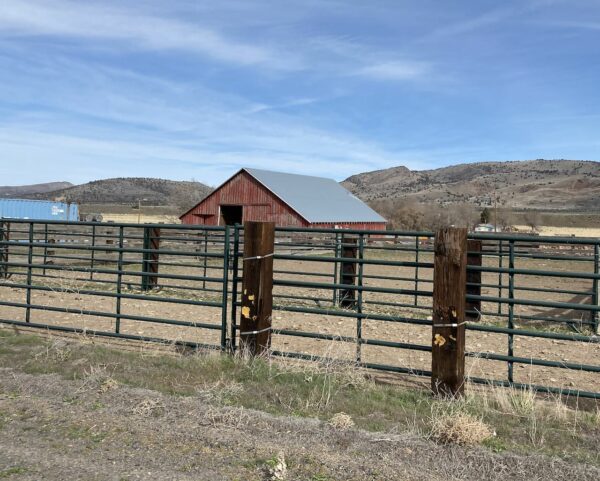
Across from the start there is a red barn and other buildings. They are part of the R2 Ranch complex. The ranch is 47 miles long and, in some places, 22 miles wide. The ranch is built around more than 4,000 acres of irrigated land, 81,000 acres of rangeland with 150 improved springs and 7 year around creeks and ponds, and a 35-acre lake. The ranch carries historical significance. The Cross Keys post office was established on July 8, 1879 at the mouth of Cow Canyon and the bank of Trout Creek (just north on Highway 97 at the beginning of the grade). The ranch was also a stage and freight station in the early days. [R2 Ranch]
Crooked River National Grassland / Entire Route
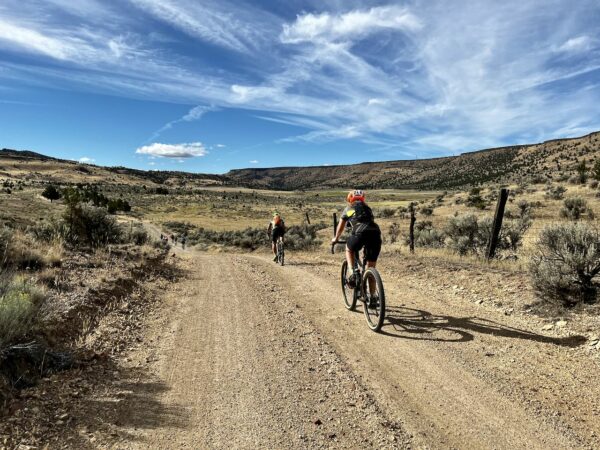
Homesteaders first settled the area in the 1880s, constructing more than 700 homes. By the 1930s, insufficient rainfall and unfavorable economic conditions led to farm failures and land abandonment. By 1935, about 35% of the homesteads were foreclosed upon by federal and private mortgage banks. The government repurchased the land from the remaining homesteaders. The Crooked River National Grassland was created by Congress in 1960 to improve range management and the forage resource. The grasslands, which cover 173,629 acres, include two National Wild and Scenic Rivers: the Deschutes and the Crooked. There are 20 national grasslands across the country, but Crooked River National Grassland is the only national grassland in the Pacific Northwest. [Ochoco National Forest]
Basalt Cliffs / ~ Miles 8.0 and 36.5
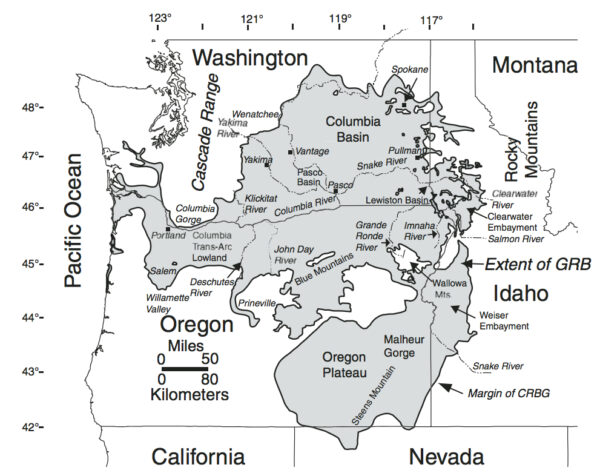
The Columbia River Basalt Group (map view) is the youngest, smallest, and one of the best-preserved continental flood basalt provinces on Earth, covering over 81,000 sq miles, mainly in eastern Oregon and Washington, western Idaho, and part of northern Nevada. Basalt exposed on the vertical walls of canyons, coulees, and buttes is visible as a closely-packed array of rock fence posts [or palisades]. These columns formed when the lava cooled and crystallized into basalt rock. When the lava cooled, it shrank. This created vertical polygons, usually five-sided, that separated from their neighbors by cracks. [Wikepedia, HugeFloods.com]
Juniper Reduction / ~ Miles 10.0 to 12.0
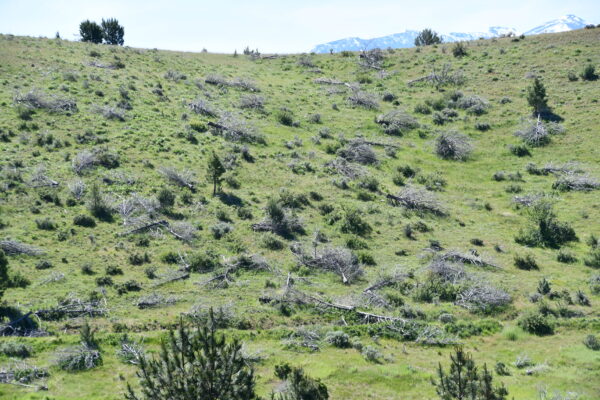
Juniper tree encroachment erodes the health of rangelands by reducing the amount of water available, diminishing soil health, and crowding out native perennial plants that feed wildlife and cattle. As trees become dense, they also fuel hotter and more severe wildfires. Learn more about how Juniper tree reduction programs restore range health and animal habitat.
Hay Creek Ranch / ~ Mile 12.5

Hay Creek Ranch and its headquarters will be to your right. For over a century, Hay Creek Ranch has been one of the largest ranch holdings in Oregon and has played a prominent role in the history of central Oregon. The ranch was established in 1873 as the Baldwin Sheep and Land Company. The Dalles-Prineville freight and stagecoach lines ran through the ranch headquarters until about 1912. [Oregon Encyclopedia]
Ashwood / ~ Mile 29.0
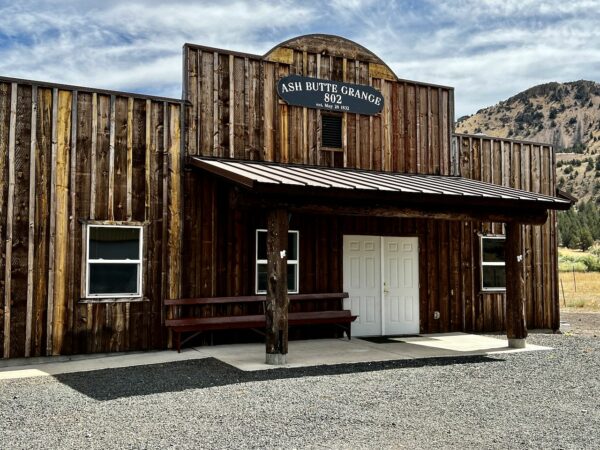
The Ashwood area (originally named Ash Butte) was first used by the Native American Sahaptin and Northern Paiute people. After the Sahaptin were forced to move to the Warm Springs Indian Reservation in the 1850s and the Northern Paiute were defeated in the 1870s, settlers moved into the area to raise cattle and sheep. Sheep ranching became an important local industry by 1900 because of the availability of the railroad in nearby Shaniko that facilitated the shipping of wool. Ashwood became a gold- and silver-mining boomtown in the 1910s. However, the minerals soon began to play out, and local residents turned back to ranching and agriculture as the mainstays of their economy.[Wikipedia]
Polka Dot Agate Mine / ~ Mile 35.0
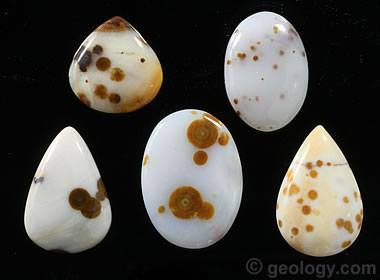
Here you will find beautiful polka dot agates and canyon rim thundereggs. The polka dot agate is a semitransparent to semitranslucent agate with suspended round “dots” of contrasting colors with an orbital flat shape. A thunderegg is a nodule-like rock that is formed within volcanic ash layers. Thundereggs usually look like ordinary rocks on the outside, but slicing them in half and polishing them may reveal intricate patterns and colors.
When We Like to Ride This
This route is best ridden late Spring through Fall. Be careful, as the route can be muddy on the dirt / gravel road into Ashwood. This is not a wintertime route, nor a route to do after it rains. You need dry conditions. In the spring, the flowers are in bloom, the grass is green, and the young calves are wandering the fields. But … fall is not shabby either!
Terrain & Riding
This ride has three unique parts. The first third of the ride is the warmup — 5 miles of flat and four short, “punchy” 100 to 300-foot climbs with gradients up to 10 % over the next 6 miles. The second third of the ride has longer climbs — 500 to 1000 feet in height with gradients varying between 5 to 8 percent. The longest climb, 850 feet in 2.5 miles, occurs as you leave Ashwood. The last third of the ride is mostly descending (through a really cool canyon!) with a few “punchy” uphills that will keep you honest.
The roads are clay-based, hard-packed, and for the most part, fast-rolling. There are several short sections of chunk. The descent into Ashwood can be rutted in the spring. It is a technically demanding 3-mile descent, with pitches in excess of 10% and an average gradient of 7%.
On the weekends, traffic is minimal. You may not see a car for half the ride, and even then, you’d likely be able to count all the cars on both hands.
The Start
The start is about 15 miles northeast of Madras. At the intersection of US Highway 97 and NW Pony Butte Road, look for the road maker to “Ashwood.” On the west side of this road, there is a red barn. Park in the dirt parking lot on the east side of the highway. There are no permits or parking fees.
Food & Water
- ~ Mile 29 / Ashwood. At the old post office, there is now (as of June 2021) an honor system “store” with snacks, drinks, and ice cream. Bring small bills.
Route Notes
This route has been impacted by the Cram Fire of 2025. It ignited on July 13, near Highway 97 east of Madras, and become the largest active wildfire in the United States, burning over 95,000 acres as of July 21. The fire destroyed dozens of homes and outbuildings. For the latest information see Central Oregon Fire and the Cram Fire Facebook page.
Be aware that the outdoor water hydrants in the Ashwood area are not safe to drink from. Use the self-service store at the old post office to refuel. And be careful in that this is a seasonal store which is only open in the summer.
We recommend a red blinky light with a rear-looking radar detector, like a Garmin Varia, for the paved sector.
Route Options
There is one bailout point at ~ mile 26. To shorten the route, turn left on Wilson Creek Road, which is gravel. Here is the GPX file for the bailout route: https://ridewithgps.com/routes/42439025/.
The totals for the bailout route: 39 miles, 3400 feet of gain. Note that the bailout route does not go through Ashwood.


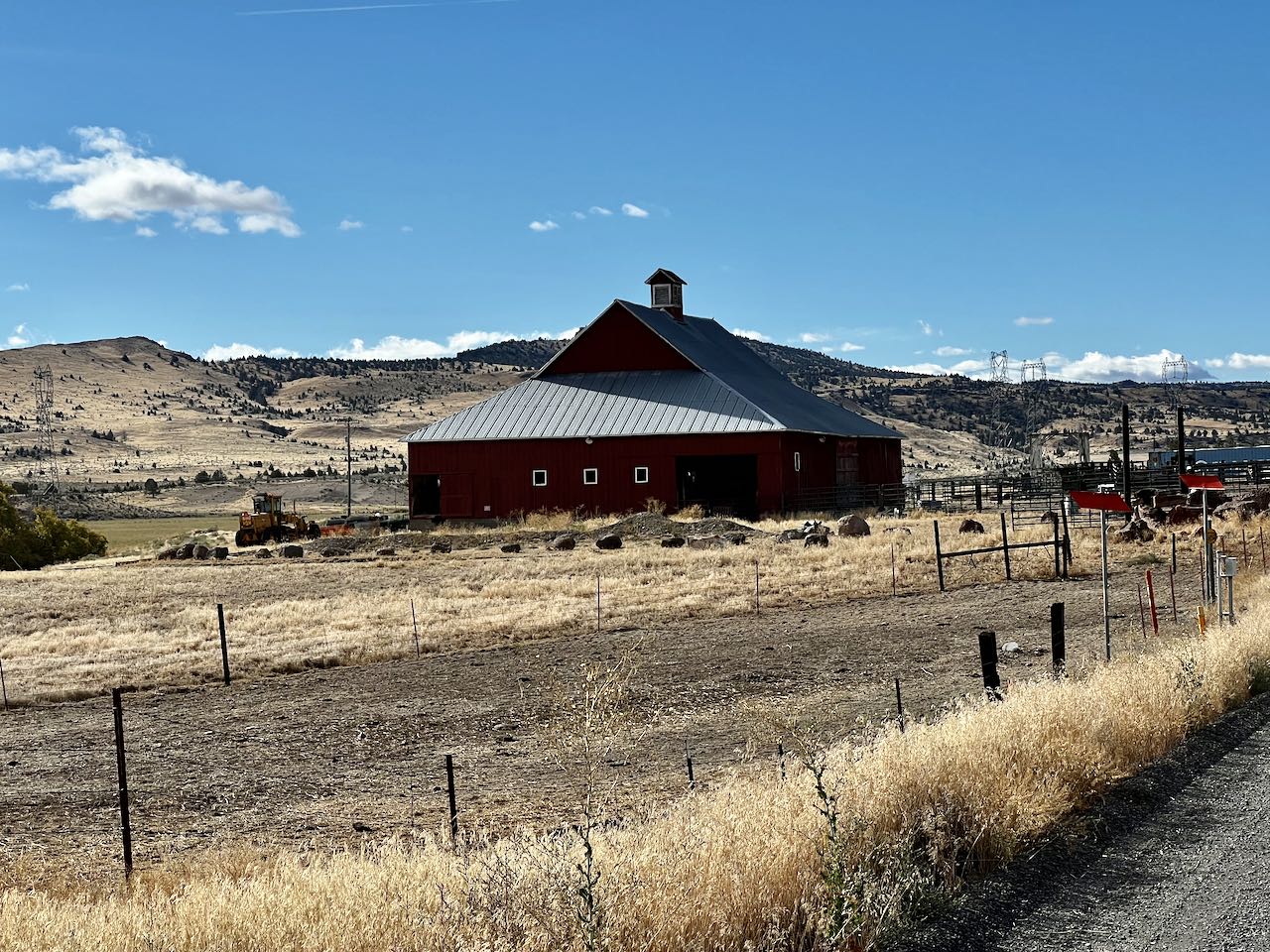
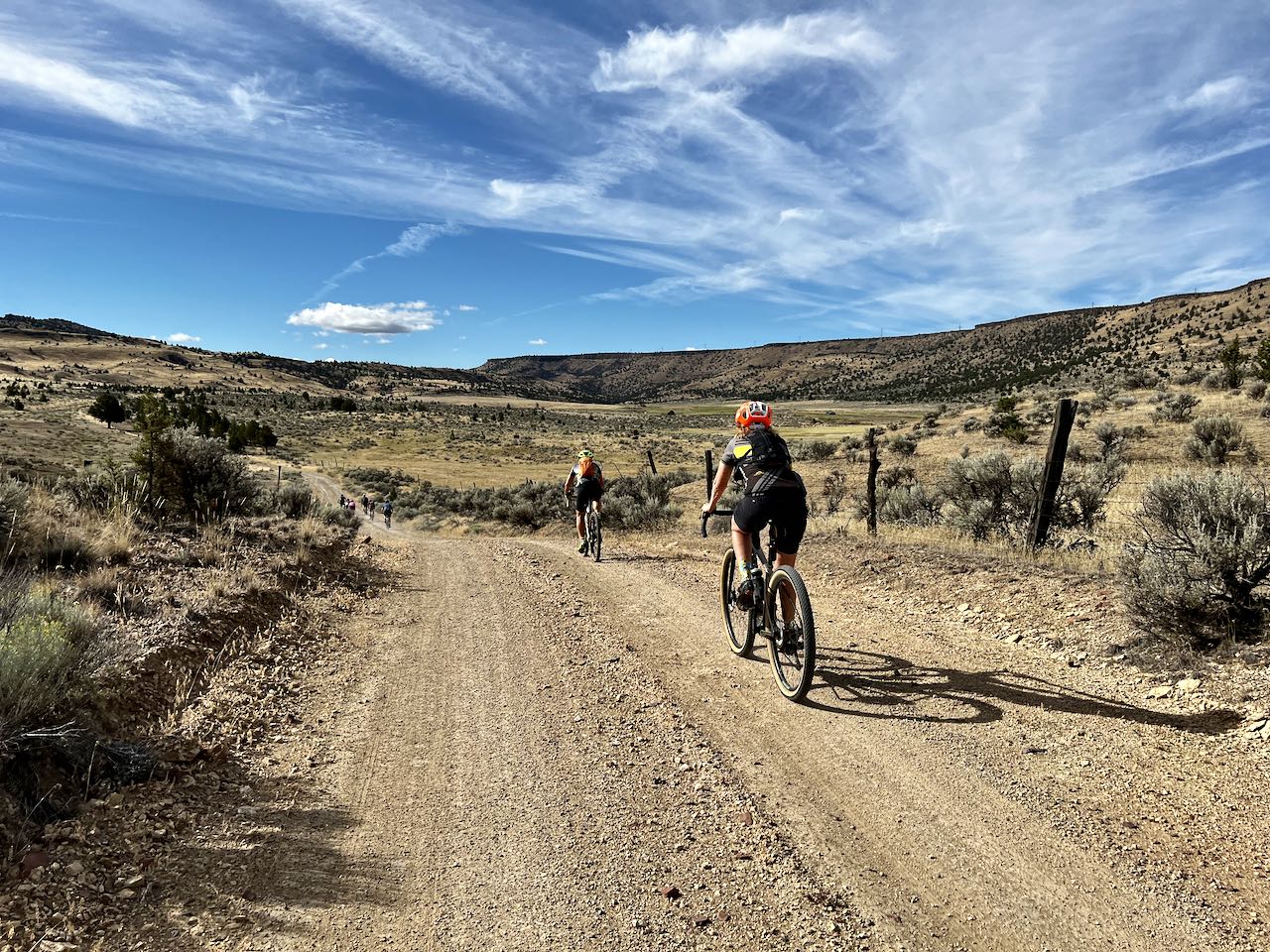























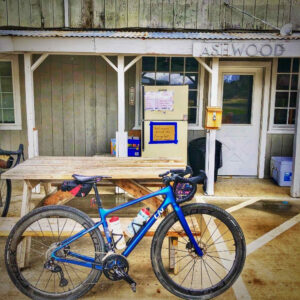 The people of Ashwood have put up a self-help store at the old post office. It has water, Gatorade, chips, and ice cream. They have also created a picnic and tenting spot with pit toilets. We encourage you to thank them for their support by dropping into the donation box a bit more than what you take. A heartfelt note of thanks is always nice too!
The people of Ashwood have put up a self-help store at the old post office. It has water, Gatorade, chips, and ice cream. They have also created a picnic and tenting spot with pit toilets. We encourage you to thank them for their support by dropping into the donation box a bit more than what you take. A heartfelt note of thanks is always nice too!

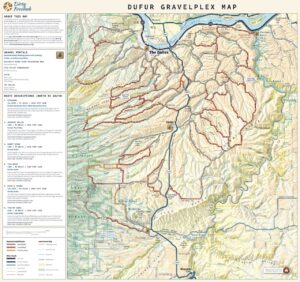
Have you ridden this route? Got a question? Join the discussion!